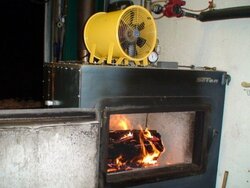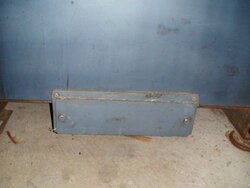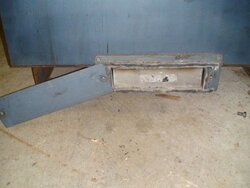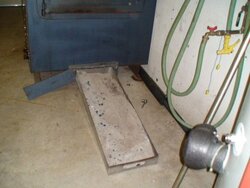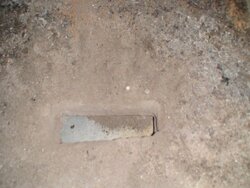I have problems with the boiler getting a lot of ash/coals which fill up the fire box in 2-3 days. Once it gets up to the draft holes it smolders and creates a lot of creosote and does not heat above 120 degree water temperature. It also does not make it 12 hours between fill ups during a below zero day which it what I need since it is at least 12 hours from the time I leave in the morning and the time I return at night.
I have a Seton W100 boiler in an outside 8'x10' insulated building. The exhaust is connected to a 8" diameter 16" double wall stove pipe (with a draft inducer which died) , connected to a stove pipe adapter to a 1'-8” double wall insulated chimney section going through the wall to a double wall insulated 8” T on the outside of the building. From there I have 7-3' long 8" double wall insulated chimney sections going up for a total of 21' of chimney with no chimney cap. I have a 2500 sq ft home with radiant heat in the slab and staple up under the second floor.
I the draft set for about 185-190 degrees with a 5 degree diff. I set the diff lower because it would drop the water temp down to 120-130 degrees if the house was calling for heat when the draft re-opened. If I keep the diff set lower it only drops to 140-160 degrees.
I have spoken to Fred and he says that I should not be having the problems that I am. This is the first heating season that I have used it (it was brand new from Fred) and it has not been working very well the whole season. I have had a couple of days that it works OK but it still creates a lot of ash and coals that I need to empty every 2-4 days. Fred says that some people do not empty the ashes out all season. I just can’t believe it after seeing mine. I have also doused the tubes with charcoal lighter fluid which burned out my draft inducer. It did seem to work a little better after that but now it seems to be back to normal (which is not very good) but it does provide enough heat during days down to -10 degrees below zero. I have a couple of electric heaters in the house to supplement the wood heat.
I burn hardwoods, red and white oak, shagbark hickory, maple and elm. Most are in the 8-14" diameter in size with some smaller pieces. I did have a little better luck with some oak that was drying for a year or so but I still had to empty ashes out in 4 days. I just cut down some dead elm and black cherry and it only lasted 2 days before the ashes and coals where up to the draft holes.
My questions are:
Is there anyone having good luck with a Seton boiler?
What kind of wood are you using and how long has the wood been drying?
How much chimney do you have?
How often do you empty out ashes?
Can you make it 12 hours between fill ups?
If there is someone that has a Seton boiler working well in the WI/MN/IA area can I come see your setup? I live in SE MN. It would be nice to talk to someone who has one working and see what is needed to make these work properly.
I have a Seton W100 boiler in an outside 8'x10' insulated building. The exhaust is connected to a 8" diameter 16" double wall stove pipe (with a draft inducer which died) , connected to a stove pipe adapter to a 1'-8” double wall insulated chimney section going through the wall to a double wall insulated 8” T on the outside of the building. From there I have 7-3' long 8" double wall insulated chimney sections going up for a total of 21' of chimney with no chimney cap. I have a 2500 sq ft home with radiant heat in the slab and staple up under the second floor.
I the draft set for about 185-190 degrees with a 5 degree diff. I set the diff lower because it would drop the water temp down to 120-130 degrees if the house was calling for heat when the draft re-opened. If I keep the diff set lower it only drops to 140-160 degrees.
I have spoken to Fred and he says that I should not be having the problems that I am. This is the first heating season that I have used it (it was brand new from Fred) and it has not been working very well the whole season. I have had a couple of days that it works OK but it still creates a lot of ash and coals that I need to empty every 2-4 days. Fred says that some people do not empty the ashes out all season. I just can’t believe it after seeing mine. I have also doused the tubes with charcoal lighter fluid which burned out my draft inducer. It did seem to work a little better after that but now it seems to be back to normal (which is not very good) but it does provide enough heat during days down to -10 degrees below zero. I have a couple of electric heaters in the house to supplement the wood heat.
I burn hardwoods, red and white oak, shagbark hickory, maple and elm. Most are in the 8-14" diameter in size with some smaller pieces. I did have a little better luck with some oak that was drying for a year or so but I still had to empty ashes out in 4 days. I just cut down some dead elm and black cherry and it only lasted 2 days before the ashes and coals where up to the draft holes.
My questions are:
Is there anyone having good luck with a Seton boiler?
What kind of wood are you using and how long has the wood been drying?
How much chimney do you have?
How often do you empty out ashes?
Can you make it 12 hours between fill ups?
If there is someone that has a Seton boiler working well in the WI/MN/IA area can I come see your setup? I live in SE MN. It would be nice to talk to someone who has one working and see what is needed to make these work properly.


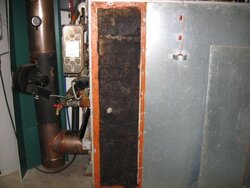
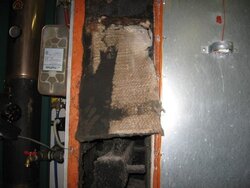
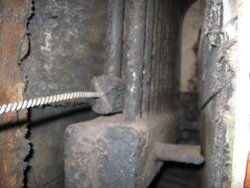
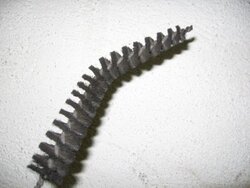
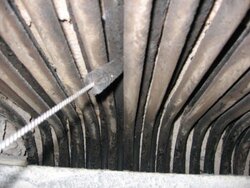
 Even before the draft inducer with .03 to .04 it was running well. Does Seton, have a grate on the bottom of the boiler emptying into the ashpan? I wonder if the slight design differences are that important... I do have problems burning very dry split wood. It does not burn clean (explained in another thread). Green 8" to 12" Oak burns excellent. I dont know how dry rounds burn yet because I don't have any. Hopefully I will have my tank up and running soon so I will have a place to put the excess heat.
Even before the draft inducer with .03 to .04 it was running well. Does Seton, have a grate on the bottom of the boiler emptying into the ashpan? I wonder if the slight design differences are that important... I do have problems burning very dry split wood. It does not burn clean (explained in another thread). Green 8" to 12" Oak burns excellent. I dont know how dry rounds burn yet because I don't have any. Hopefully I will have my tank up and running soon so I will have a place to put the excess heat.